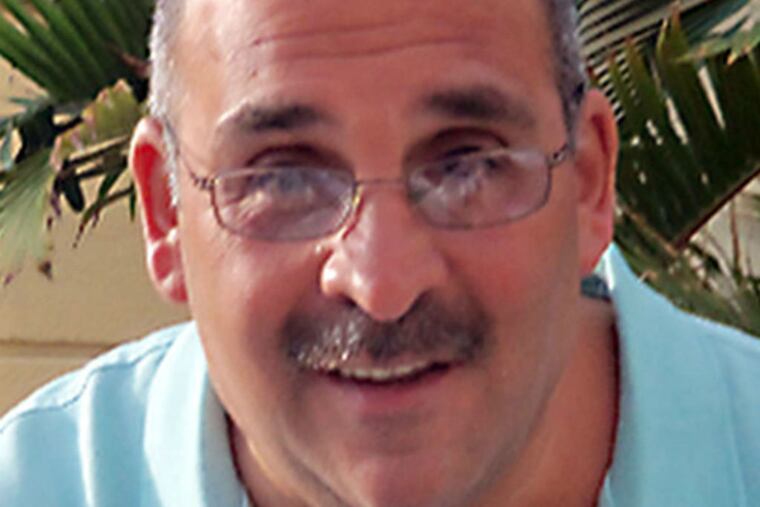Supreme Court case could strip millions of subsidies
Until she could buy health insurance on healthcare.gov last year, Gina Connor saw her doctor only when it was "unavoidable."

Until she could buy health insurance on healthcare.gov last year, Gina Connor saw her doctor only when it was "unavoidable."
With most of her income going to caring for her child and paying the mortgage and utility bills, Connor relied on over-the-counter remedies for some five years to see her through. But doctor visits became "unavoidable" for colds and other ailments, Connor had to pay out of pocket.
"It was expensive, depending on what was done," said the 38-year-old Upper Darby resident. "I had to make payment arrangements."
When the Affordable Care Act marketplace opened, Connor qualified for a subsidy and bought Independence Blue Cross' bronze tier Keystone Health Plan. With a $220 subsidy, she pays a premium of $25 a month, albeit with a $6,000 deductible.
Being insured "was a big relief," said Connor, who works part-time driving a bus. "It has been a blessing because I couldn't afford insurance without the subsidy."
Depending how the Supreme Court rules on the King vs. Burwell case, Connor's subsidy, and those of 87 percent of the people who qualified when buying a plan for 2015 on healthcare.gov, may disappear, say federal officials.
The plaintiffs argue that only people buying plans through exchanges "established by the state" qualify for a subsidy and that people who buy it through a federally run exchange, such as in Pennsylvania and New Jersey, are not eligible for government help.
Since the ACA became law five years ago, more than 16.4 million uninsured people now have insurance, according to the government. Counted among that number are 472,697 Pennsylvanians and 254,316 New Jersey consumers.
More recently in Pennsylvania, about 193,000 people who were not covered in November 2014 bought plans. In New Jersey, more than 122,000 buyers had no plan in November.
But if the court narrows subsidies to state exchanges, it will not only limit who receives them, it will likely bring down the law.
Up to 8 million low- and middle-class people in 34 states will lose their federal subsidies, according to studies by the Rand Corp. and the Urban Institute. And premium costs will shoot up for individual plans. The Urban Institute estimates an unsubsidized, ACA-compliant silver tier plan for a 40-year-old nonsmoker would rise 35 percent; Rand pegs the price jump at 47 percent.
The latest court challenge comes as Americans' view of the law continues to evolve. A new Kaiser Family Foundation poll found that 43 percent of Americans have a negative opinion of the law and 41 percent see it favorably.
That is a marked difference in how the law was seen during the darkest days of its rollout. In November 2013, 49 percent of Americans saw the law unfavorably and just 33 percent supported it.
The study also found that 53 percent of Americans were unaware of the Supreme Court case challenging subsidies. And 25 percent said they had heard only a little about it. Connor is among those who were completely unaware.
"I'm devastated to hear that," she said. "I would be back in the same position with no health insurance and not able to get to a doctor. Hopefully, they will listen to the people who need health insurance."
Frank Addessi has not only heard about the case, he has read the law and blogged about it. As a freelance writer, Addessi has gone uninsured for stretches. But thanks to the ACA, he bought Highmark Blue Cross' Shared Cost PPO3200 via healthcare.gov last year and gotten a $100 subsidy. He renewed the plan for 2015 with the same subsidy.
As for the case, "it's nonsense," said Addessi, 55, who lives in Roseto in Northampton County. "Not being a lawyer or playing one on television," he adds, "the lawsuit shouldn't have made it to the Supreme Court. What the plaintiffs have done with the suit is take one or two sentences and blown them out of proportion."
Addessi isn't worried about losing his $100 subsidy. His concern is for people such as his wife and 11-year-old niece, who have pre-existing conditions and would have to scramble for coverage.
"Shut it down and that all goes away," he said. "That's an important fact that people don't seem to understand. This is not just about people getting subsidies. It all ties together."
This article was written in partnership with Kaiser Health News, an editorially independent program of the Kaiser Family Foundation.